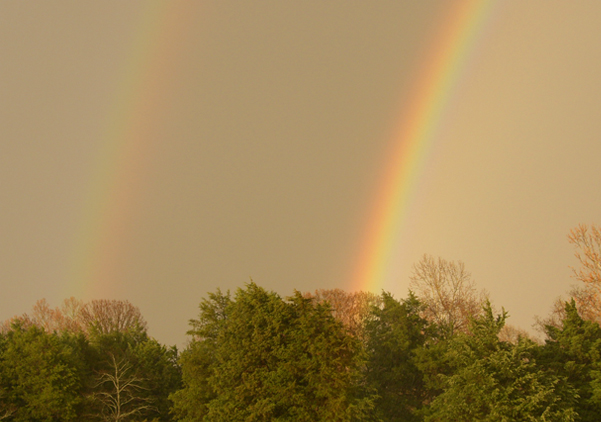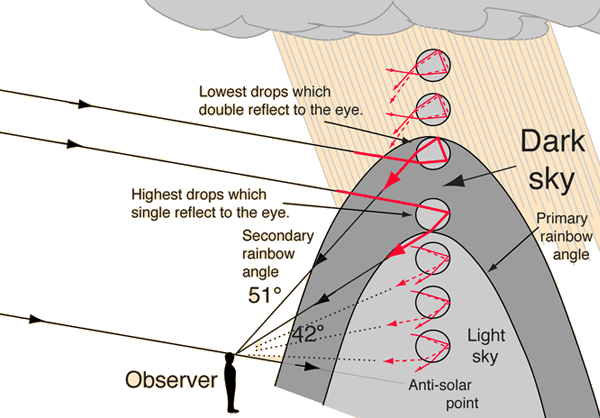Light Sky Under Rainbow


 |
|
Rainbow concepts
Atmospheric optics concepts
References
Greenler
Schaaf
| HyperPhysics***** Light and Vision | R Nave |
Light Sky Under Rainbow
 
|
Index Rainbow concepts Atmospheric optics concepts References Greenler Schaaf | |||||||
|
Go Back |
Dark Sky Between Rainbows
 The light rays which form the primary rainbow are the rays of that color which strike the eye from the highest angle, all other rays of that color emerging at an angle closer to the horizontal. Those additional rays contribute to the light sky under the rainbow, but that light is essentially achromatic since some rays of all colors emerge at those angles. On the other hand, the rays which form the secondary rainbow are the rays of that color which strike the eye from the lowest angle. This means that for falling droplets between the lowest angle of the secondary rainbow and the highest angle of the primary rainbow, there are no internally reflected rays which reach the observer's eye. According to Lynch and Livingston, this dark band is called "Alexander's dark band", named after the Greek sage Alexander of Aphrodisias. Alexander described this band in his chronicles in about 200 AD. 
|
Index Rainbow concepts Atmospheric optics concepts References Greenler Schaaf Lynch and Livingston Sec 4.7 | ||||||
|
Go Back |